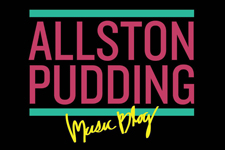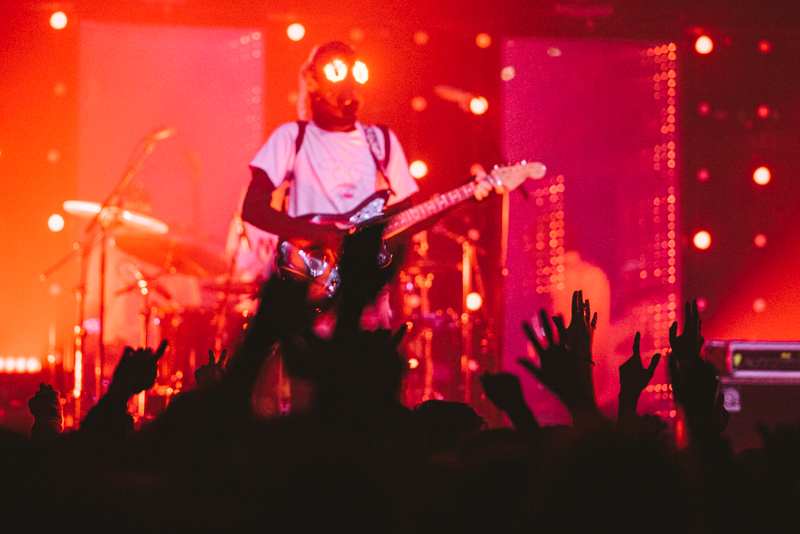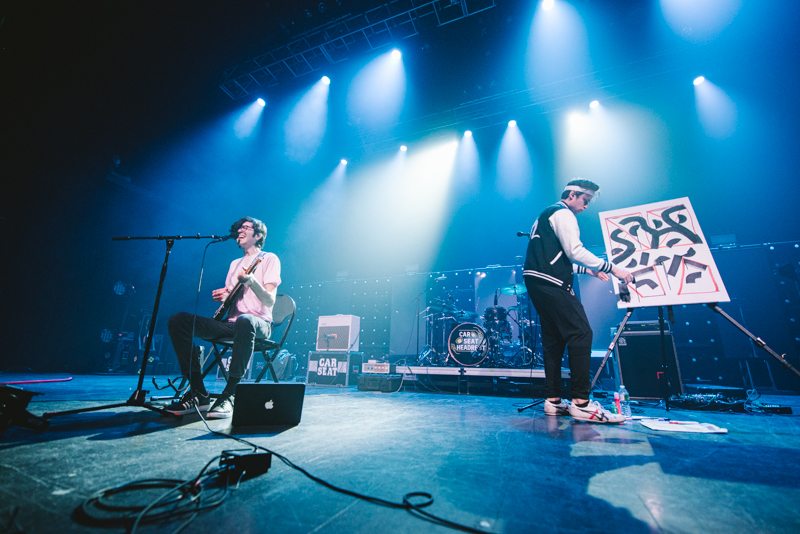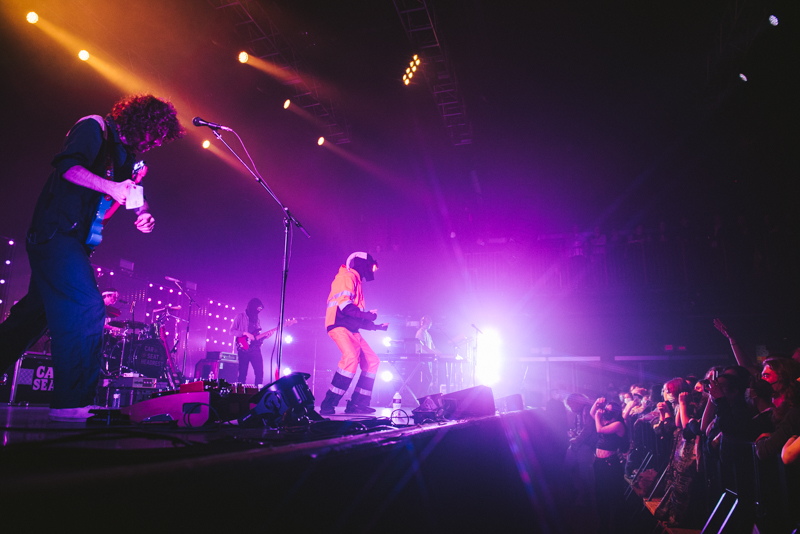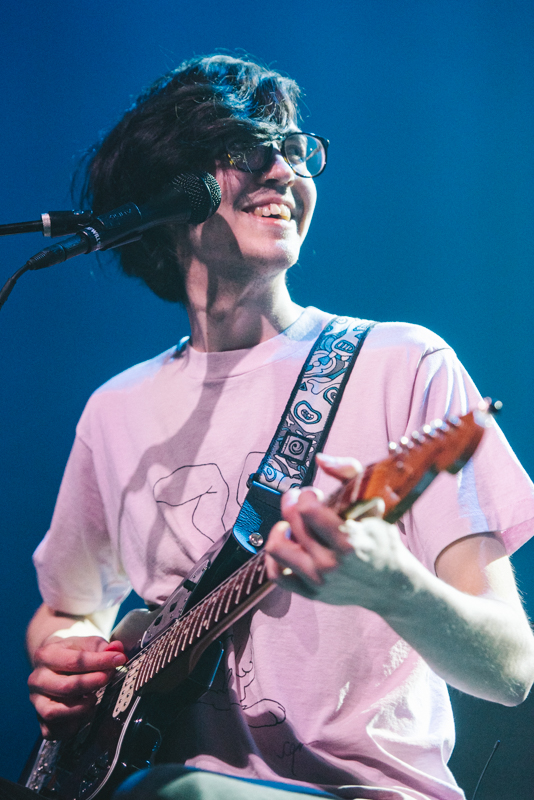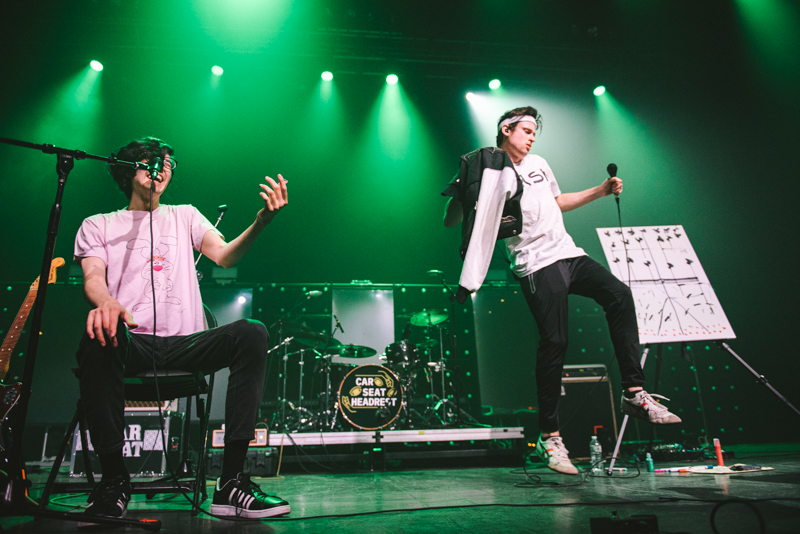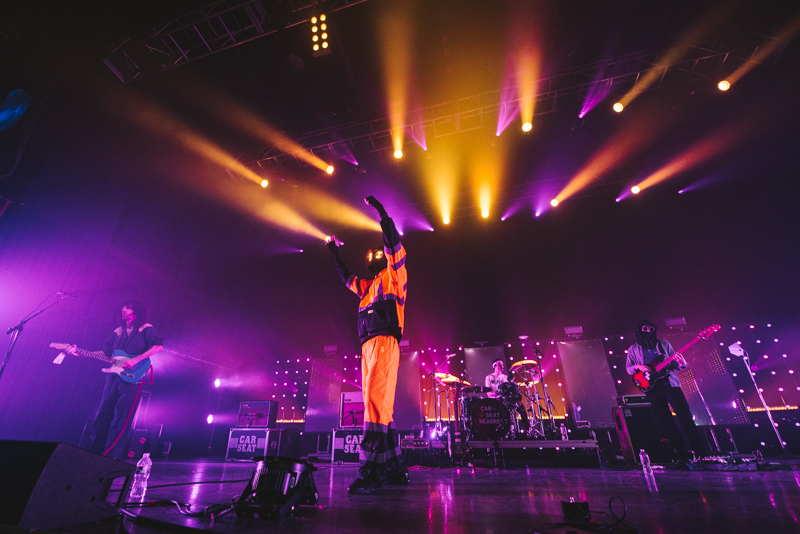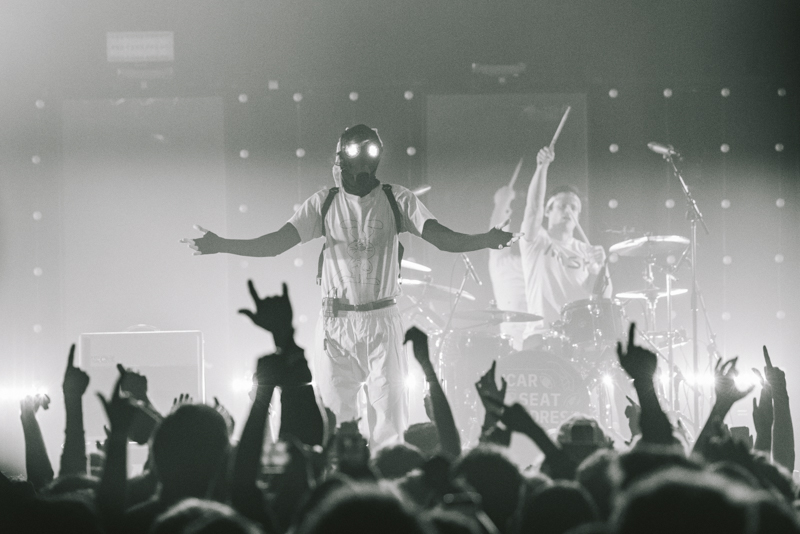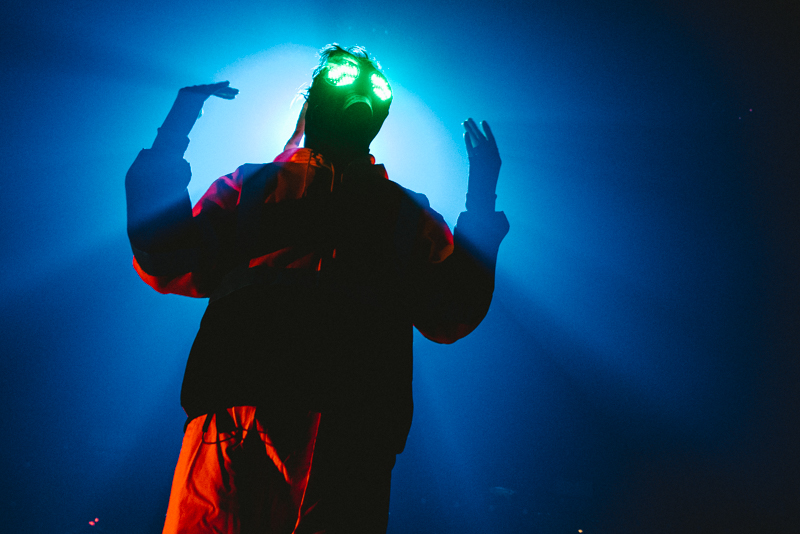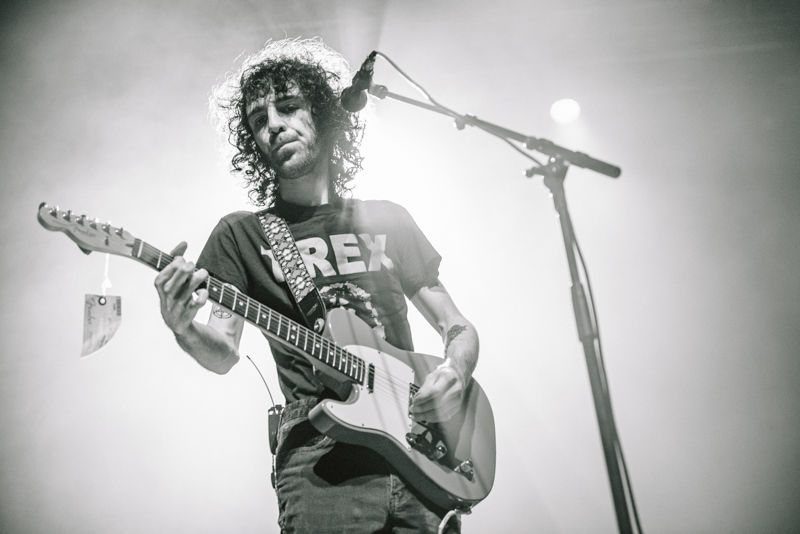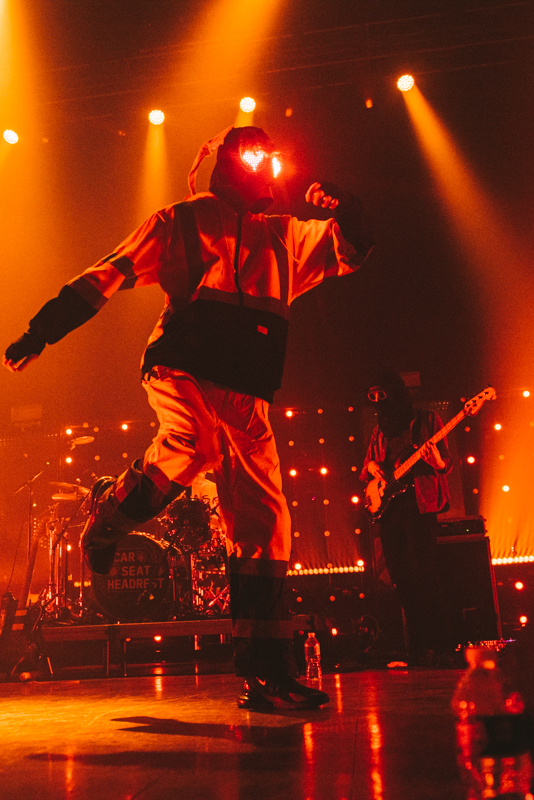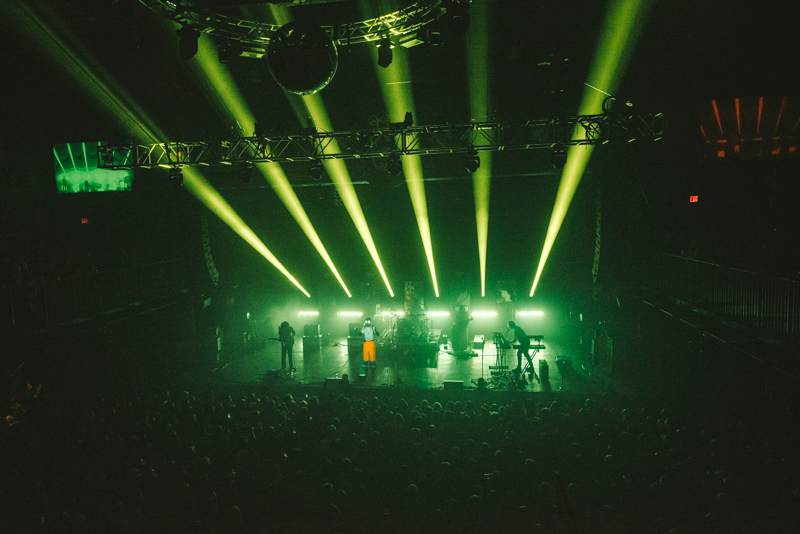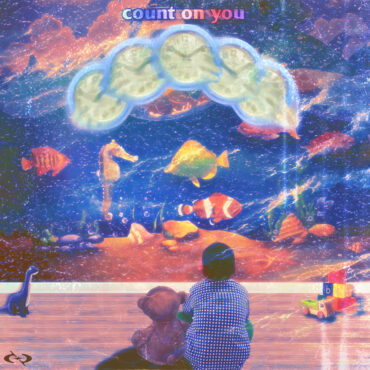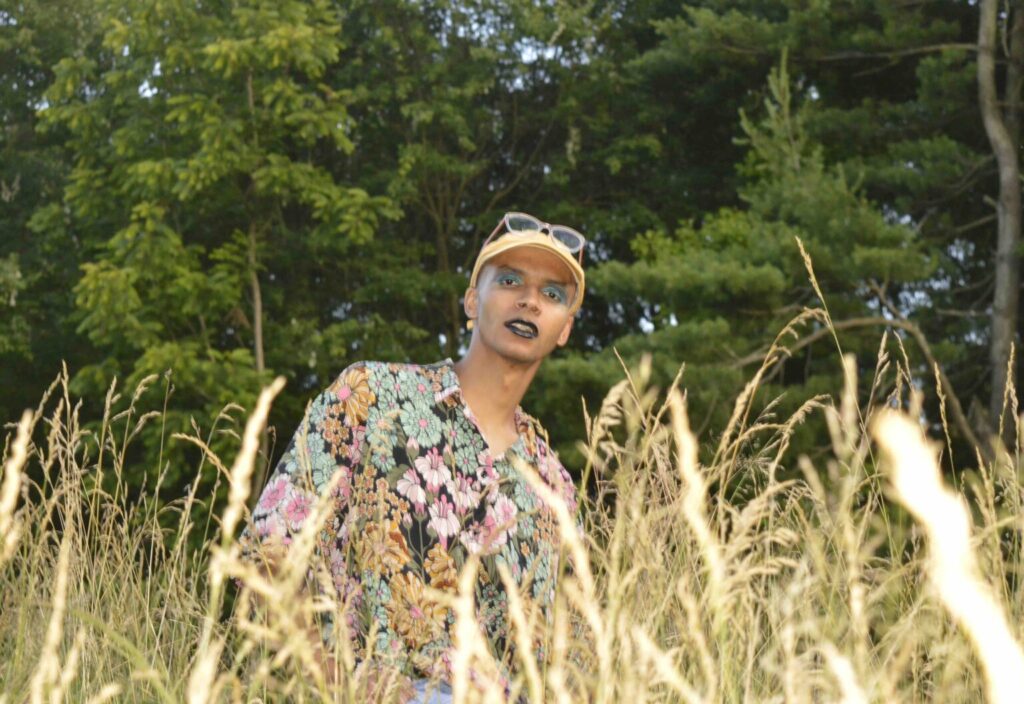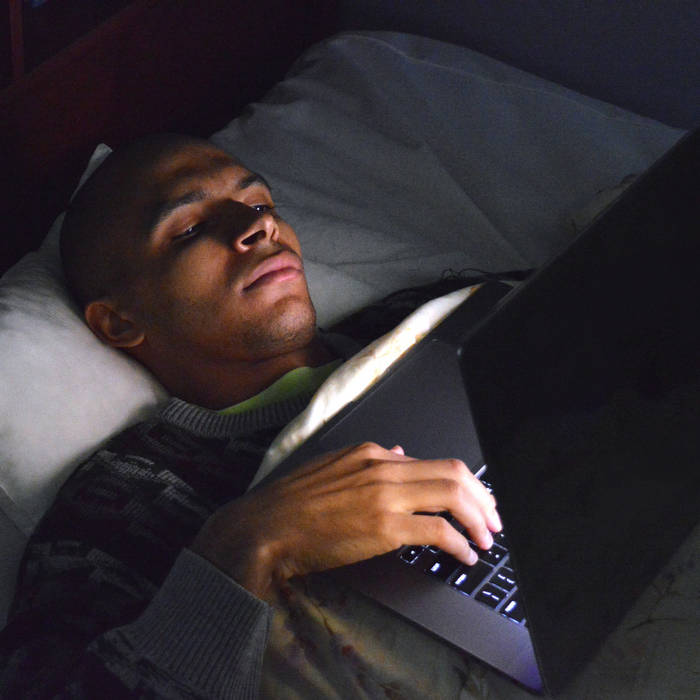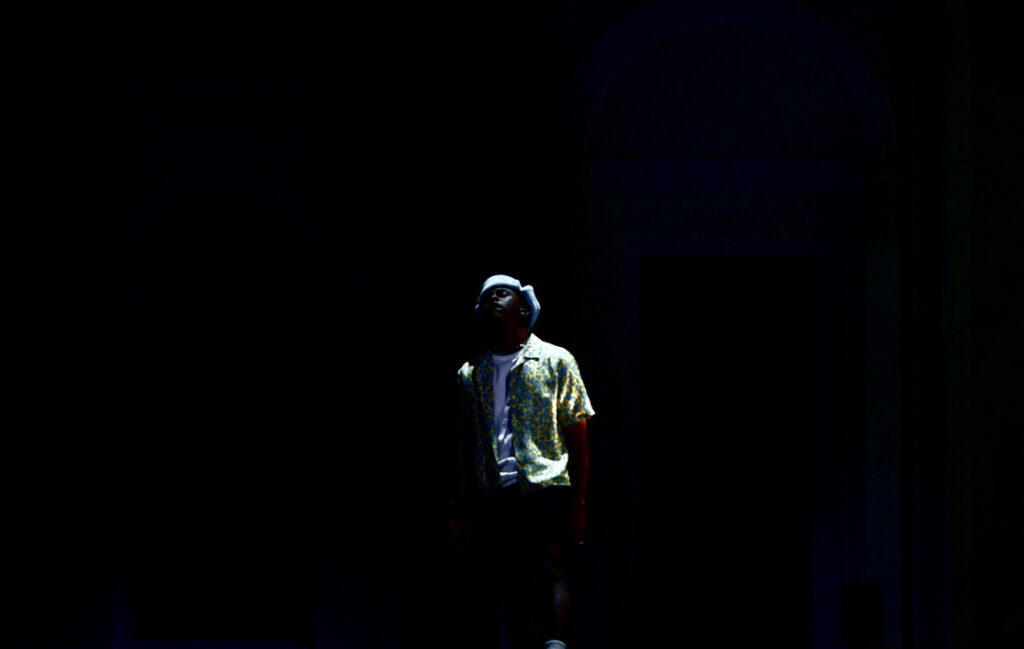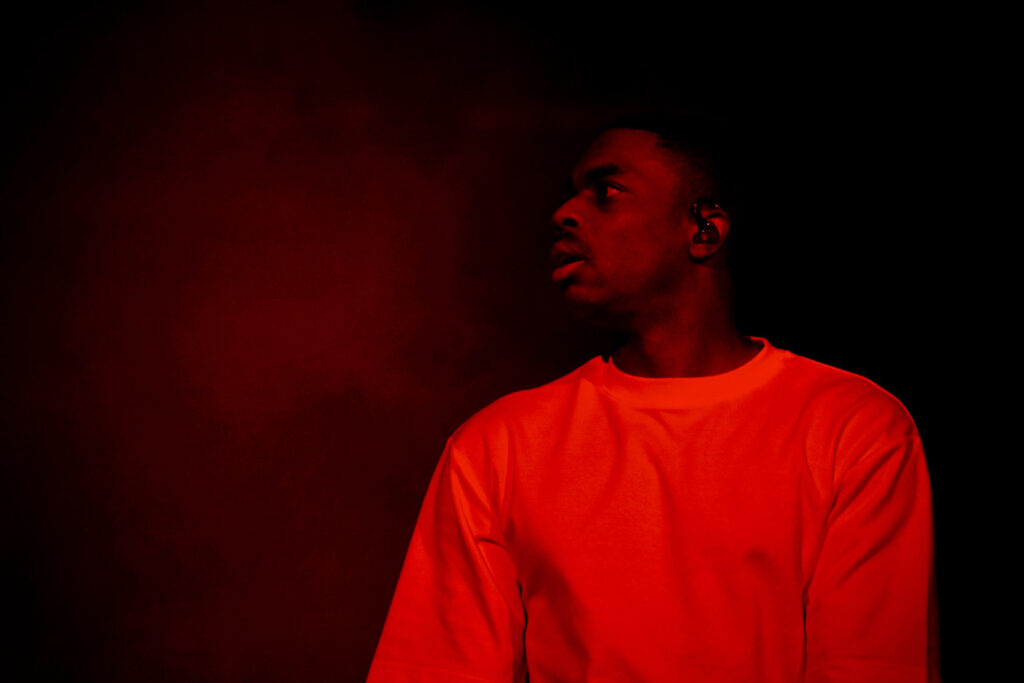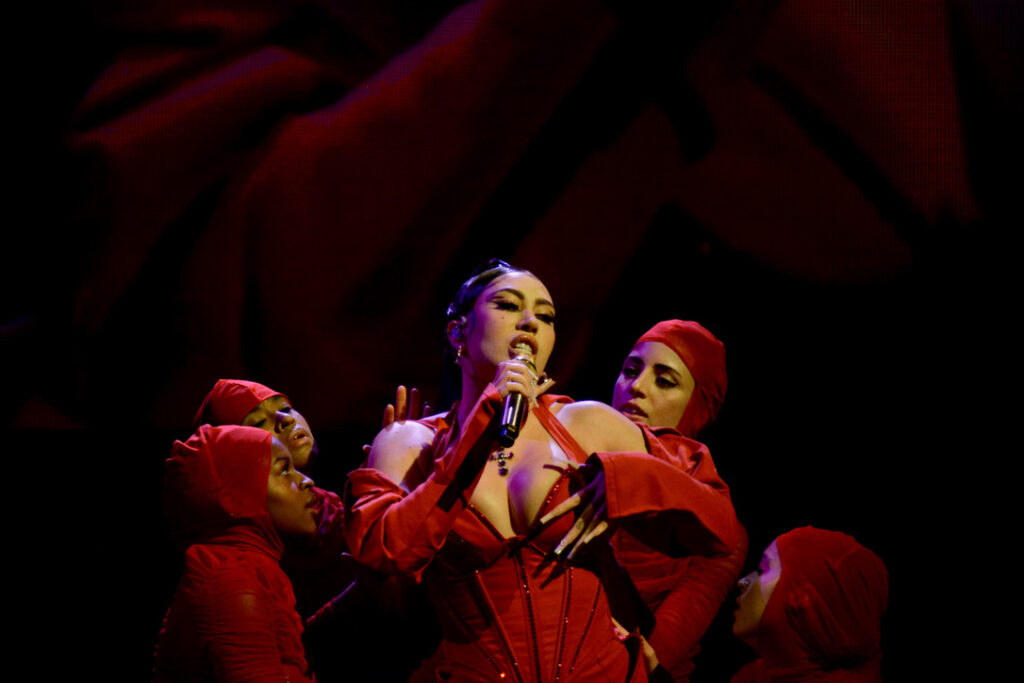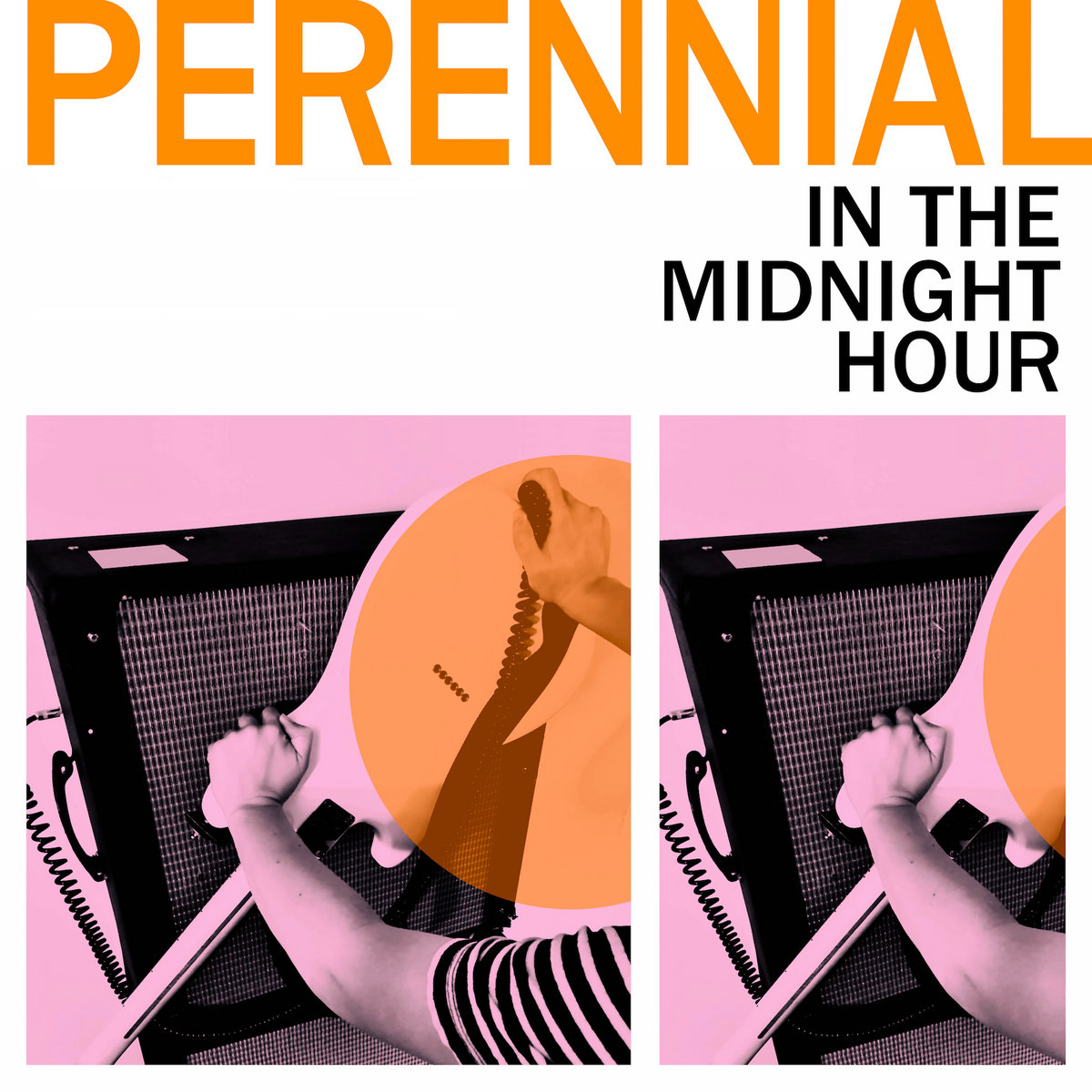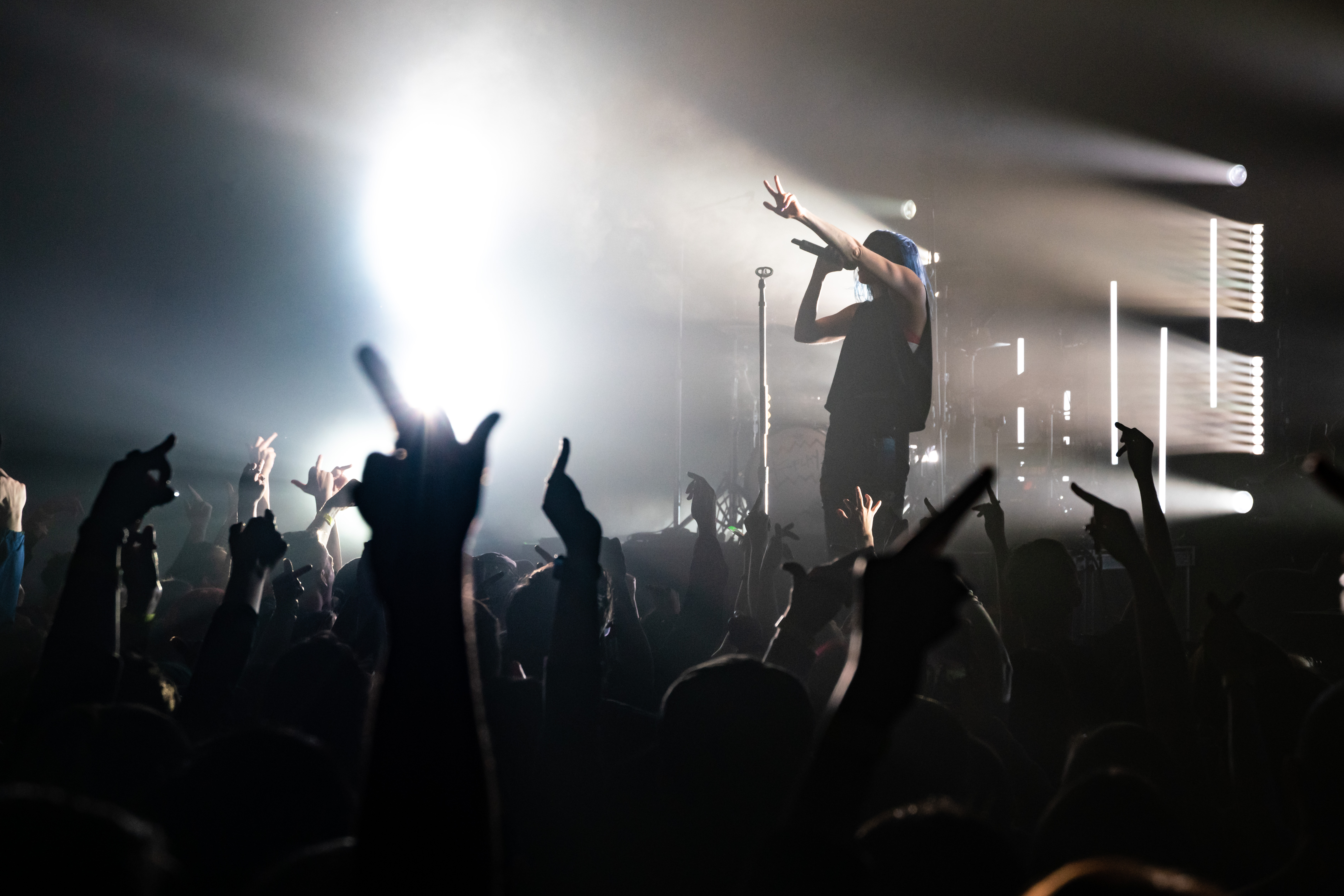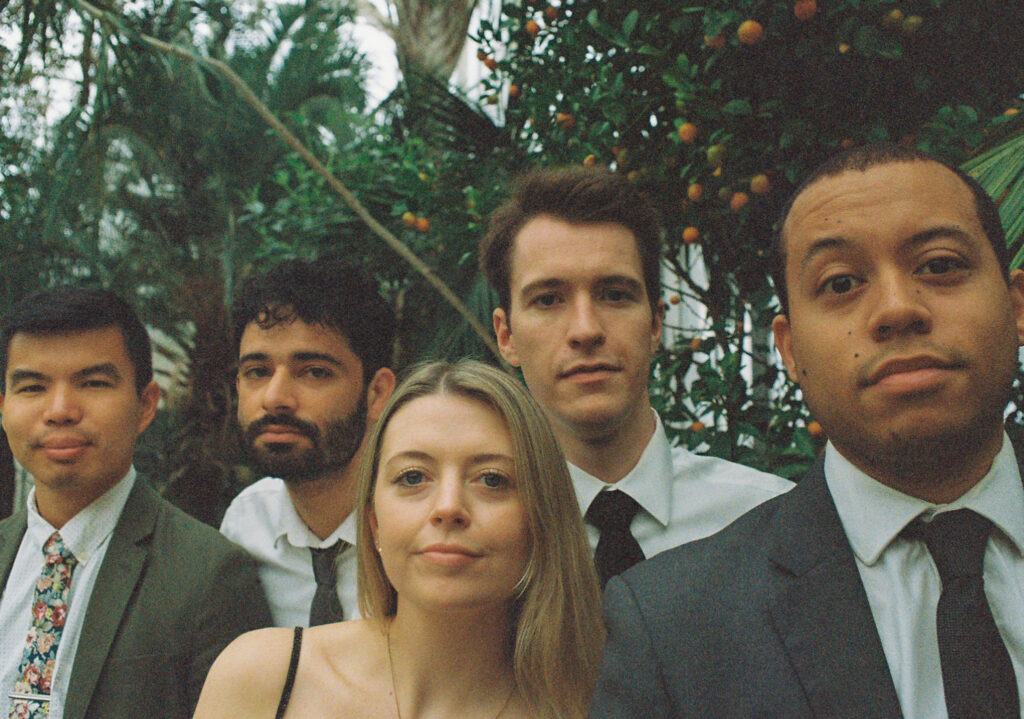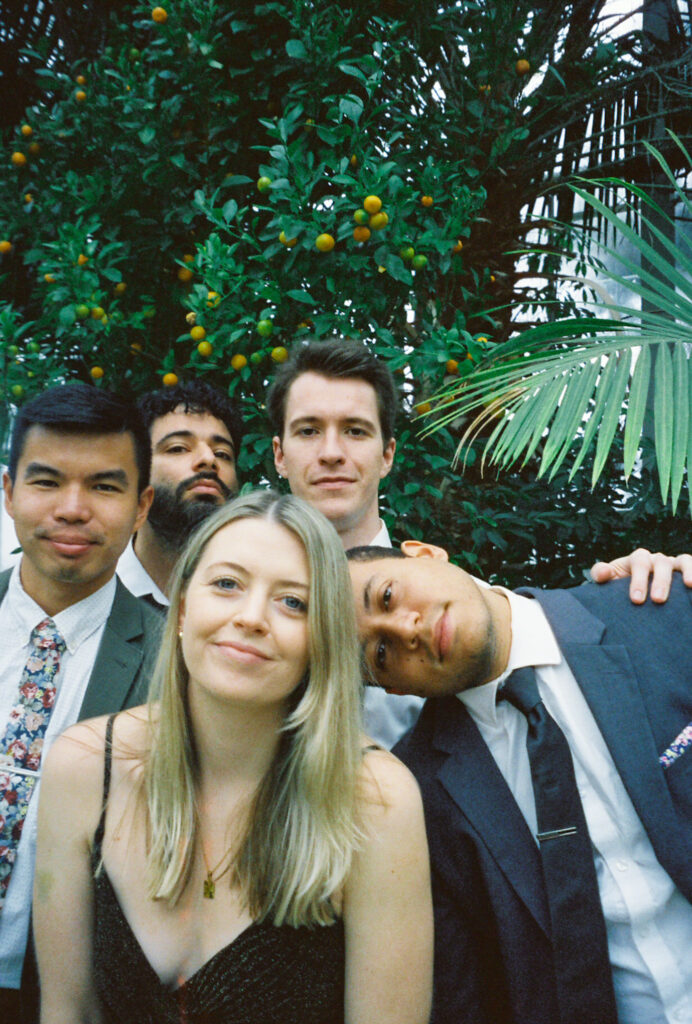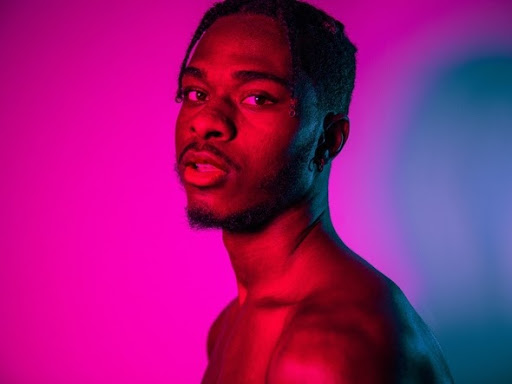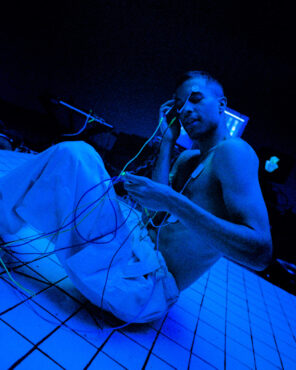
Photo by Matt Noll
Philadelphia’s Body Meat released (by our estimation) one of the most exciting projects of 2021 with his self-released Year of The Orc EP. An ambitious multimedia piece that incorporated dance, narrative film, and fashion alongside Body Meat’s beguiling mix of intercontinental dance music, R&B, and pop, Orc is a step up for an artist once held back by a lack of a working computer. Now signed with the forward-thinking Partisan Records, Body Meat has been on the road in support of Orc, playing shows with fellow Philly wanderers Spirit of The Beehive (who also released one our favorite records of the year in 2021) and on his own. Armed with elaborate stage clothes and array of drum pads, Body Meat has been bringing his hybrid footwork meets Portuguese (via Africa) club meets East African rhythm sound all around the US. He hits Somerville’s Rockwell Theater on Tueday, March 29th with the similarly-minded Philly musician Pedazo De Carne Con Ojo and Pisha.
We caught up him on the road to Chicago earlier this week to talk about Orc.
Allston Pudding: Correct me if I’m wrong, but this is your first big nationwide tour, right? How’s it been going?
Body Meat: Almost! I didn’t really get to go to the west coast, which is something I really wanna do soon, but yeah we’ve hit a good bit of the country otherwise. It’s been going really well.
AP: What was the audience reaction to your set at the shows you did with Spirit of The Beehive?
BM: Pretty varied I guess, cause I think a lot of their fans don’t know who I am and maybe they were expecting a band to open which made for an interesting reaction each night. There would always be a handful of people who had heard of me and I’d hear them sorta informing others at the show what it would be like, which was funny. I feel like even when people are coming to see me they don’t really know what the show is gonna be like until they see it. Which is something I really like, because I like to change it up each time. But on the Spirit tour I could tell it was pretty jarring for people, but the reaction overall was really positive. I went into it being like “well there’s gonna be a lot of people for whom this isn’t gonna be their thing, and that’s ok.” Instead I was pleasantly surprised it was the opposite most nights.
AP: How was the SXSW experience?
BM: That was a whirlwind. I mean I didn’t even play that many shows, but I was stressed the whole time! I don’t know, I’m glad I did it, but I could definitely tell that everyone was still kinda getting their things together since they hadn’t done it in a while. In general it’s a very stressful festival, but I know it was good for me. It’s kinda wild playing something like that after lockdown, but I had a good time for sure. I had fun playing, but it was especially cool seeing the acts that came from other countries to play it. I was more interested in that.
AP: Switching gears a bit, Year of The Orc definitely felt like a level up, were you consciously trying to elevate Body Meat while making it?
BM: Yeah for sure. There were a few things going on while I was making that EP, like we were all locked inside and I think I wanted to fill the gap of information that I was receiving. Like I was stuck inside and I just wanted to compact all these ideas and see how maximal I can make my music in response, so that’s what the songs started turning into like “I can probably push this further and further.”
That was definitely an exercise in “how maximal can I make my productions” which taught me a lot, and the same goes for Truck Music, which taught me how to get to that point. I always want to go to another level, like I always say the last thing I put out is me working towards the next thing, which also kinda makes it hard for me to play old music, as well.
AP: Would love to hear a bit about the short film ULTIMA as well. What were you drawing from when putting that together?
BM: So I hadn’t even finished the song yet, but I was writing it with the idea that it would be a dance piece. Initially I felt that I didn’t really know how to dance in that way, but I have a friend named Helen who is a really great choreographer, and my thought was having her choreograph someone else dancing. But, as I got closer to finishing the song, I realized the song is about my life, and conversely she convinced me to do the piece as she finished writing it herself. My initial thought was “oh I can do some of these moves, but if you’re writing it for someone who can really dance, I probably couldn’t pull it off.”
Instead it ended up working out. All of it ended up about me being back in the place where I grew up, and I hadn’t been there in years. I didn’t want it to just be like another music video, and I wanted my mom to be in it, and I wanted her to explain where I come from. I had never made something where I let people know who I am in that way, so that was kind of the idea. I felt like I could tell it best through dancing.
AP: From that video and fan vids I’ve seen, dance is clearly a big part of your process. How does dance inform the music you make?
BM: When I’m writing something that feels right I start dancing around in the room. I’m now writing music with choreography in mind. With everything I’m writing I’m visualizing what kind of movements I can have people doing visually to this song, and that’s totally informing the new music as a result, which started with “ULTIMA.” It just helps my production, I can see the song more clearly if I think about it in a visual dance aspect, it just makes more sense to me. I get more ideas for where the song should go and how the production should sound if I can visualize movements to it.
AP: Is your live performance based on intentioned movement as well? Is there choreography in mind or is it just more based on where the song is taking you in that moment?
BM: It’s a bit of both. There’s definitely certain sections that I have choreographed like “this is where I need to be when that part hits” but moreso especially when I play “ULTIMA” that has the exact choreography at the end of the song, so I typically perform that to end the set. Well some nights I end the set with it. Most of the time it’s just me moving to the music. I think there’s something about electronic music that I like to see being played. My friends and I had been trying for years to use drum pads and guitars plugged into MIDI instruments to make music, so that element has become part of my performance. Even though I’m not performing with a band with this project right now I want the audience to be able to see the sounds, so I sort of become that via my movements. It’s not super intentional in that way most of the time, but I want the viewer to be able to visualize what the sound is doing to me, so maybe it can translate to them as well.
AP: I’ve read that you had a short past in modeling, and again, based on your recent stage performances, do you see fashion as a part of Body Meat as well?
BM: Yeah, I am very into fashion, but I’m very particular in that the fashion I like, and a lot of the clothes I want to wear in my head haven’t really been invented yet. I recently started working with a stylist in New York named Phil Gomez, he actually designed the outfit for this tour and I added the lights on my arms as a last-minute to help accentuate the movements on stage. The lights were supposed to be on my legs, but then they kind of messed with the outfit, so I put them on my arms. It’s way more effective than I thought it would be.
AP: Not to make assumptions, but to me, your music comes from a deep love of the act of listening to and making music itself. How do you translate that sort of emotion into the art you make?
BM: I listen to a lot of music, sometimes I have to kind of stop myself because I will constantly be looking for new sounds and then I’ll be scrapping ideas that I have for Body Meat because I heard something that is just so far beyond what I’m making. It kinda hinders my process, I need to flesh my ideas out a bit more before I keep changing everything. That listening is definitely a huge part of the process though, I take in so much because I just want to learn. That’s my whole thing is I feel like I haven’t learned enough yet. I’ll see art out in the world that moves me in such a way that I’ll literally try to study that thing and I’ll obsess over it like “how can I use these plug-ins to make this work this way.” Or “maybe I should try to wire this instrument in this way to try and make it sound this way. How did they get this to happen?” It’s an obsession for sure, but I end up on the other side learning more and being able to integrate newer things into what I do and I’m constantly looking for new influences in that way.
Real talk, some of my favorite artists are people that haven’t really been doing it that long, and I think some of the best art is made by people who are just learning how to do whatever it is they’re doing in real time. Usually, if a piece of art is coming from someone’s heart and they’re just picking up what they can from the world around them and expressing it in their own way, it’s gonna be meaningful. I’d much rather watch someone that has style doing that than someone who is super proficient and technical, but robotic with their process.
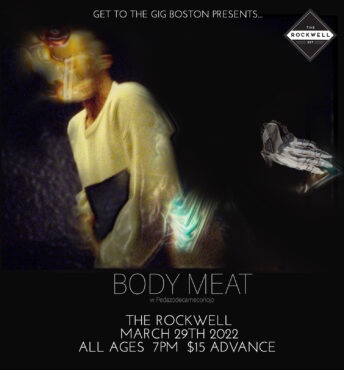
Flyer courtesy of Get To The Gig Boston
AP: You’ve mentioned a deep love for Principe Discs and footwork and Ethiopian rhythms, what is it about these sounds that you’ve found so foundational as a musician and a listener?
BM: For someone who is really interested in the weight of rhythm, and the weight of songwriting, that is just like the peak for me. I’m so drawn to the weight of that music. They all incorporate a kind of cyclical sound, it repeats endlessly but never sounds the same. That’s why people love techno, but for me I just hear that kind of music and it just moves me in a different way. I can’t really explain it, I just like the weight of the rhythm and I like the meters they choose and I like the speed at which they play the music. There’s just something about it that moves me, I can’t help myself, I just move my head back and forth and smile.
The thing about music like that is it’s so tangible, maybe it’s in the production or something, but to me it always feels like it’s being played live in front of me. Even like the most robotic footwork, for some reason the way it’s swung, in my mind I visualize someone physically playing it, and I think that’s why I enjoy that type of music so much. I can see the movements and I can see the dances that go along with it, it’s beautiful.
AP: The records you were making for Citrus City were obviously born from a different sound palate, what prompted the change you embraced on Truck Music?
BM: Well when I was writing the guitar stuff it was always trending towards this direction, I just didn’t have a computer. I was trying to sample and stuff with this little 8 track, I didn’t even have a proper sampler. I would just make noises with my mouth and make loops with the tape machine. The Ableton thing started happening because I finally got a computer and I had gotten a DAW, I won’t say how. Initially I was just using it to mix and then it turned into “ok maybe I should use a plug-in” and I’d started using a lot of friends’ instruments and stuff too and we all started messing with electronic sounds around the same time. It was just a really natural progression as I learned a little more about Ableton from friends and we would goof around with MIDI keyboards and stuff. I had written the song “Nairobi Flex” with my friend Matt, but neither of us were happy with it until I messed with it some more. After that I slowly started to piece together Truck Music with that palette in mind. Obviously Year of The Orc is in turn just me learning even more about electronic production.
AP: You’ve spoken before about wanting to expand the notions of pop with your music, where do you think that instinct comes from?
BM: I just genuinely love pop music. I grew up listening to Earth, Wind & Fire a lot, which was pop music at the time along with Stevie Wonder. I also listened to a lot of NSYNC and TLC and the Backstreet Boys and I just loved all that music, I don’t know what it is, there’s something about a good pop song. You can almost hear the history in the music, like where all the sounds are coming from and how that style of music is performed and how it’s evolved over time, it’s regional influences. So much about the building blocks of pop music interests me, and I learn so much from it. Plus, anyone can make a pop song, that’s inspiring to me. You don’t have to be the best producer to make one because it’s so simple. So for me it’s how can I take that formula and mess with it in my world.
AP: What do you make of hyerpop and your place within it?
BM: It’s cool! I really like what kids are doing with all this music now. For a second I was kinda placed within it and I didn’t really know what it meant at all, and I was confused because it seemed like it was just something that Spotify had created. While I appreciated being put on this thing, I wasn’t sure exactly what it was. Obviously the people that sorta started this sound, like SOPHIE, I’m not sure if fans of it fully understand that it will change constantly, and so I guess what they think of as “hyperpop” may be a limited view. Like, the people who created the base of it, or even the people making it right now, their version will not be the sound of this thing further down the line. It may even be right now that those sorts of sounds are already being phased out.
This movement definitely opened doors for a lot of kids who didn’t know they could make that type of music, which is great, but for the purists of it, this thing is gonna become almost unrecognizable at a very rapid pace. The speed in which this scene evolves is what interests me most, rather than holding onto whatever this thing is in this particular moment. It probably won’t be called hyperpop, it will have some other name, and I wanna see what that turns into. The people I know within that world are already moving past what’s going on right now, which is exciting.
AP: How did the collaboration with Laraaji come about?
BM: While I was writing the song “Ghost” I was using a sample pack that he had made and I was using one of his vocals and I realized that I needed more of his voice. I could have made it work with the sounds I had of him, but I really wanted to have him put his own spin on the song. We’re under the same publisher, so I took a shot in the dark and being such a fan of his work I sent him the track like “no pressure, if you wanted to listen to the song and do anything, like hum on it or whatever, it would mean the world to me.”
A little while later I was fishing with a friend of mine who’s also a huge Laraaji fan and we’re at the river with my little bluetooth speaker not catching anything as usual, when I get an email that was like “Laraaji just did stems.” I open them up and just hear the raw vocals he had done for the song and they were so good, like “this is a song on its own, even without my song.” I ended up talking to him on Zoom afterwards and he was just really sweet and said a lot of kind things, it was a really special thing.
AP: It feels like there’s maybe not a sound itself, but an approach to a certain corner of Philly musicians right now that feels really inspiring. Is that something you’re conscious of?
BM: I know what you mean, similar to what I was talking about earlier with regions influencing the music in such a way, for me at least, the friends that I share music with, we all hide away to work on stuff and then sporadically meet up and show off to each other. It’s kinda this culture of you make something and then you hear your friends’ thing and think “oh, that’s actually pretty wild, I need to step it up.” Then you go away again for a while and your stuff is in turn a little wilder which re-inspires them. I think that’s what is going in Philly right now, like we’re all feeding off each other and trying to push each other to be better each time we meet up. You hear a lot of that messing with timing, the big Philly thing with the slippery time signatures in less of a math-forward way but instead going by feel, that’s definitely emerged from this back and forth. That’s what I love so much about being there, I’ve always wanted that sort of community because I never felt like I could communicate with people in that language, but when I moved to Philly it was clear that everyone gets it. Now we can all push each other to do it better.
AP: How was the Boston gig when you last toured through here with Injury Reserve?
BM: That was a funny show because my computer at that time was a really old Macbook and it actually died on us at that show. I think I only got to perform like half the set or something? We were trying to fix it, and those guys were up on stage with us trying to troubleshoot it. I had some kid come up on stage and do a YEAH BOY contest with me and then decided we were done. We couldn’t fix it, we had no idea what was going on. Of course it ended up just being a MIDI cable, something so simple.
I am well prepared this time.
AP: Finally, I’d be remiss if I didn’t ask: will we be getting a Truck Music physical release?
BM: Maybe! That’s gonna have to be a surprise.
Body Meat plays at Somerville’s Rockwell Theater on Tuesday, March 29th with Pedazo De Carne Con Ojo and Pisha. Tickets still available right here.
